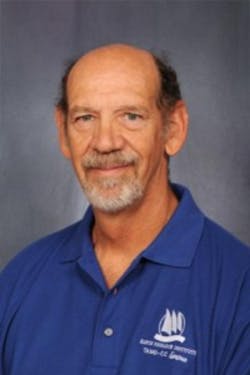Scientists at Texas A&M University-Corpus Christi are working on a new project that aims to link the environmental damage done offshore in the 2010 Deepwater Horizon oil spill in the the Gulf of Mexico with the overall wellbeing of coastal residents.
Dr. Paul Montagna
The project by Dr. Paul Montagna, Chair for Ecosystems and Modeling with the Harte Research Institute (HRI) for Gulf of Mexico Studies at Texas A&M University-Corpus Christi, is one of the first to be funded by the National Academies of Sciences’ (NAS) Gulf Research Program. After the Deepwater Horizon oil spill, the federal government asked the NAS to establish a new program to fund research that would enhance oil system safety, human health, and environmental resources in the Gulf of Mexico. The program has $500 million to fund these activities over a 30-year period. Montagna was awarded $118,000 for his project, called "The Effect of the Deepwater Horizon Oil Spill on Human Wellbeing in the Gulf of Mexico."
"This award from the NAS Gulf Research Program will allow our scientists to delve more deeply into impacts of oil spills and illuminate the link between ocean and human health and wellbeing of both," said HRI Director Dr. Larry McKinney. "Performing integrated, multi-disciplinary studies like this is exactly what our institute was created to do."
READ ALSO: Scientists Say Gulf ‘Resilient’ 5 Years after Deepwater Horizon Oil Spill
The multidisciplinary research project will team HRI’s natural scientists and HRI Associate Director and Chair of Socio-economics Dr. David Yoskowitz to develop a model that will determine the value of Gulf of Mexico ecosystem services — a term that scientists use to describe benefits that humans receive from the environment. These benefits can be anything from enjoying a walk on a beach to the food web that supports huge recreational and commercial fisheries. That model will test how ecosystem services have changed since the oil spill, showing the link between the offshore environment and human wellbeing.
"The assumption has always been that the ocean absorbs this pollution, especially the deep parts, and any pollution that does occur is not connected to people in any real way — out of sight, out of mind," Montagna said. "So that’s the real key. Can we build those connections? Can we show how the Gulf and the people who live here are part of a complex socio-ecological system?"
The study will look at three categories of ecosystem services provided by the Gulf:
- Provisioning, which is the ability for the Gulf to sustain a food web that benefits human activities like fishing;
- Recreational activities like birding and swimming; and
- Cultural heritage benefits, like the satisfaction and joy people get from visiting the ocean.
It is increasingly important to understand the connections between life on the shore and pollution in the Gulf of Mexico as oil and gas exploration continues to expand into deeper and riskier production waters, Montagna said. Deepwater production already accounts for more than 80 percent of oil and 45 percent of natural gas extracted in the Gulf.



